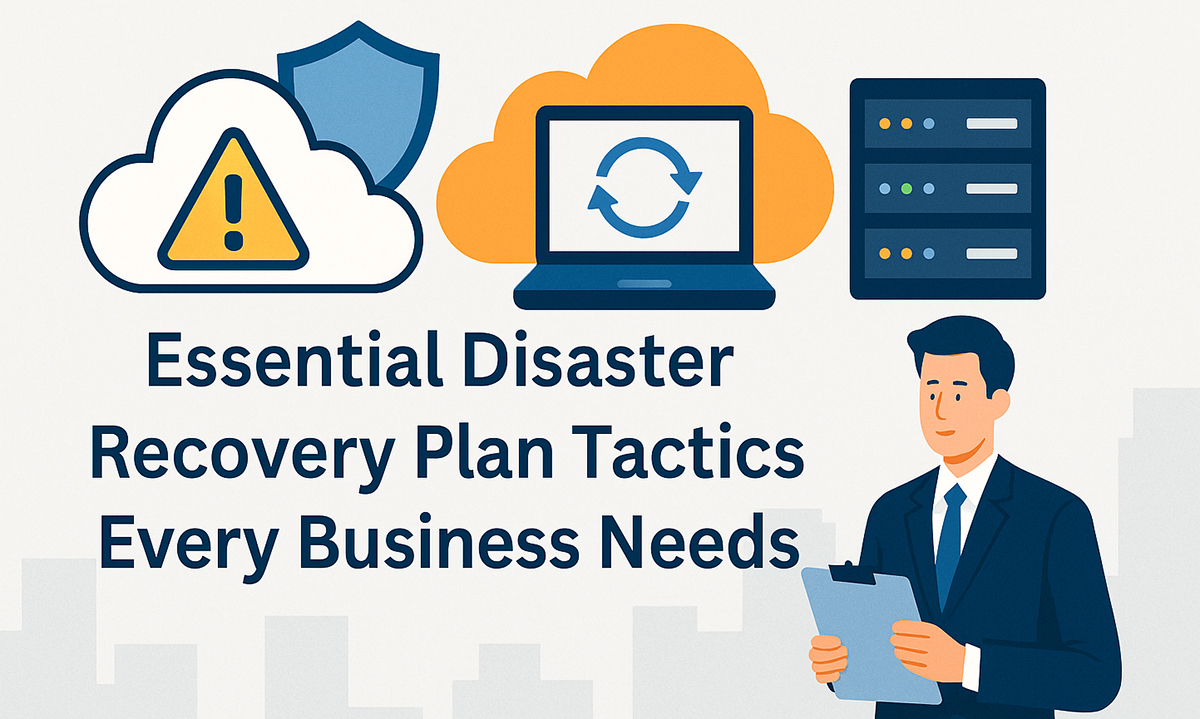 Introduction
Introduction
Disaster recovery is no longer just about backups or annual fire drills—it’s about ensuring uninterrupted business in a world where downtime can cost thousands by the minute. Whether facing a cyberattack, flood, or a simple human mistake, the ability to recover operations swiftly and smoothly defines organizational resilience. Given the increasing reliance on digital infrastructure, seamless disaster recovery is now imperative for maintaining business continuity and resilience.
Adapting to Modern Threats with Proactive Recovery Planning
Today’s risks are unpredictable and unforgiving—ransomware, natural calamities, system failures, or even an employee’s accidental click. These threats strike fast, and reactive responses fall short. Organizations need intelligent, proactive recovery strategies that are agile enough to keep up with the speed and complexity of modern disruptions.
Disaster Recovery vs. Business Continuity
Disaster recovery (DR) restores IT systems; business continuity (BC) ensures operations don’t grind to a halt in the meantime. Together, they form a dual-layer safety net. While Disaster Recovery restarts the core systems, Business Continuity sustains the operational flow to prevent service interruptions. Coordinated correctly, they ensure recovery with minimal disruption.
Know Your Risks Before You Recover
Effective planning starts with risk assessment. Whether it’s aging infrastructure or poor data redundancy, vulnerabilities vary across organizations. Regular audits and mapping dependencies help identify what systems are mission-critical and which gaps could derail operations. Knowing your weak points is half the battle.
Understand RTO and RPO
Recovery Time Objective (RTO) defines how fast you must recover. RPO specifies the tolerable extent of data loss that can occur before core business processes are adversely affected. These two metrics are central to shaping your recovery plan. Whether your target is a few minutes or several hours, your DR architecture must align with business priorities and risk tolerance.
Crafting a Rock-Solid Recovery Plan
A resilient DR strategy covers more than just backups. Implement real-time replication, establish failover processes, secure secondary sites, and develop step-by-step recovery playbooks. Success depends on aligning people, processes, and platforms to function cohesively when disaster strikes.
Choosing the Right Model: On-Prem, Cloud, or Hybrid
Each disaster recovery model offers pros and cons. On-premise setups give control but lack agility. While cloud-based disaster recovery ensures speed and flexibility, it can raise concerns regarding data governance and compliance standards. A hybrid approach often strikes the best balance, offering tailored flexibility and reliability.
Test, Refine, Repeat
A plan not tested is a plan at risk. Engaging in structured tabletop exercises and real-time drills helps uncover operational gaps and strengthen collaborative response efforts. Practice builds confidence and agility, ensuring your team can act decisively under pressure. The goal isn’t perfection—it’s readiness.
Automation: The Speed Multiplier
In a crisis, time is everything. Automation tools trigger recovery workflows instantly, reduce manual errors, and dramatically cut downtime. When anomalies are detected, automated responses can kick in within seconds—transforming recovery from reactive to proactive.
Communication is Critical
Chaos breeds confusion. Define clear communication protocols—who gets notified, how, and when. A solid communication plan prevents misinformation, ensures faster decision-making, and keeps all stakeholders—internal and external—informed without panic.
Train the Team, Not Just the Tech
Even the best tools falter without skilled hands. Train your response team regularly, simulate various disaster scenarios, and assign clear responsibilities. A prepared team reduces recovery time and builds trust across the organization.
Regular Updates Keep Plans Alive
Technology, threats, and business priorities evolve. So must your disaster recovery plan. Revisit and revise it regularly—especially after incidents or major system changes. Staying current ensures your plan is effective, not outdated.
Cybersecurity and DR: A United Front
In many cases, cyberattacks are the disaster. Encrypt backups, enforce access controls, and implement real-time threat detection within your DR strategy. Cyber-resilience means integrating security into every step of your recovery plan.
Consider DRaaS for Expert Support
Disaster Recovery as a Service (DRaaS) provides advanced recovery capabilities without burdening internal teams. Ideal for SMBs, DRaaS offers 24/7 monitoring, rapid failover, and built-in compliance. Outsourcing to experts doesn’t reduce control—it enhances capability.
Conclusion
Rather than being treated as a reactive measure, seamless disaster recovery must be recognized as a critical strategic priority. From defining RTO/RPO to leveraging automation and DRaaS, recovery requires foresight, structure, and ongoing refinement. In an age of constant disruption, resilience is your edge—and it starts with a well-executed disaster recovery plan.
Stay updated! Follow us on social media! Facebook, Twitter, LinkedIn
Check out our newest blog entry (Website Launch Checklist for a Seamless Go-Live)
Subscribe to get free blog content to your Inbox




